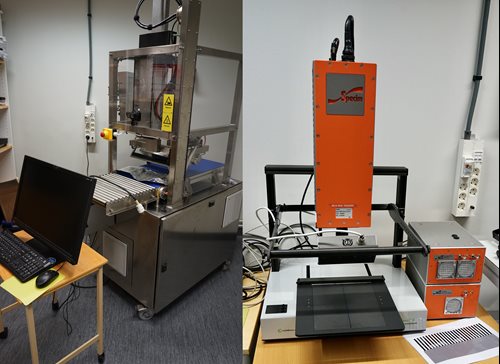New knowledge about the different parts of the tree opens up possibilities for the development of high-performance products
Every part of the tree should be used where it provides the most benefit. The core wood goes to sawmills, and the narrower part of the trunk becomes pulpwood. A study within Mistra Digital Forest takes it a step further and investigates whether paper and pulp mills can make better use of the tree's natural variation. The results surprised the researchers.
In the study, a spruce tree was harvested, and the properties of the juvenile wood, branches, heartwood, and sapwood were analyzed. Do their properties differ, and if so, how can these differences be utilized in further refinement towards lignin applications, nanocellulose, and paper pulp?

– What truly fascinated us is how the branch fraction stands out. The branches have higher lignin content and a different carbohydrate composition compared to other fractions. They are a kind of intermediate between deciduous and coniferous trees. We are likely able to benefit from the specific properties of the branches in pulp production," says Gunnar Henriksson, Professor of Wood Chemistry at KTH and responsible for the study.
The results showed that all fractions can be used for pulp production and are suitable for manufacturing nanocellulose. However, it was also discovered that the desired byproduct of pulp mills, black liquor lignin, has different properties depending on its origin. The reasons for this and how this knowledge can contribute to optimizing the production of different products remain to be seen.
Developing tools for identifying chip fractions
The newly acquired knowledge sparked interest in whether it is industrially feasible to identify and separate wood chips into different fractions. This, in turn, is a prerequisite for being able to cook each fraction separately.

By using a Near-Infrared (NIR) tool, wood chips from juvenile wood, sapwood, and heartwood could be identified. In brief, the chips were scanned by a hyperspectral camera that captured multiple wavelengths. The collected data were then used to train models capable of separating chip pieces based on their origin. Initial tests showed that it is possible to develop a tool for identifying fractions, and machine learning techniques provide the best precision.
– We were able to identify 90 percent of all chip pieces, and the accuracy is high regardless of whether the chips are dry or frozen. Now, the analysis will be streamlined to match an industrial process. We will also investigate whether it is possible to identify chips from branch nodes, the part of the wood where the branch grows out from the trunk, as this is highly interesting from a biorefinery perspective, says Mikael Thyrel, Associate Professor at SLU..

The image shows the hyperspectral NIR camera that Mikael Thyrel has used in the measurements.
Back to Gunnar Henriksson:
– Indeed, it appears that separate cooking of fractions can result in more valuable pulps and high-performance products. Soon, we will conduct a similar study on hardwood.